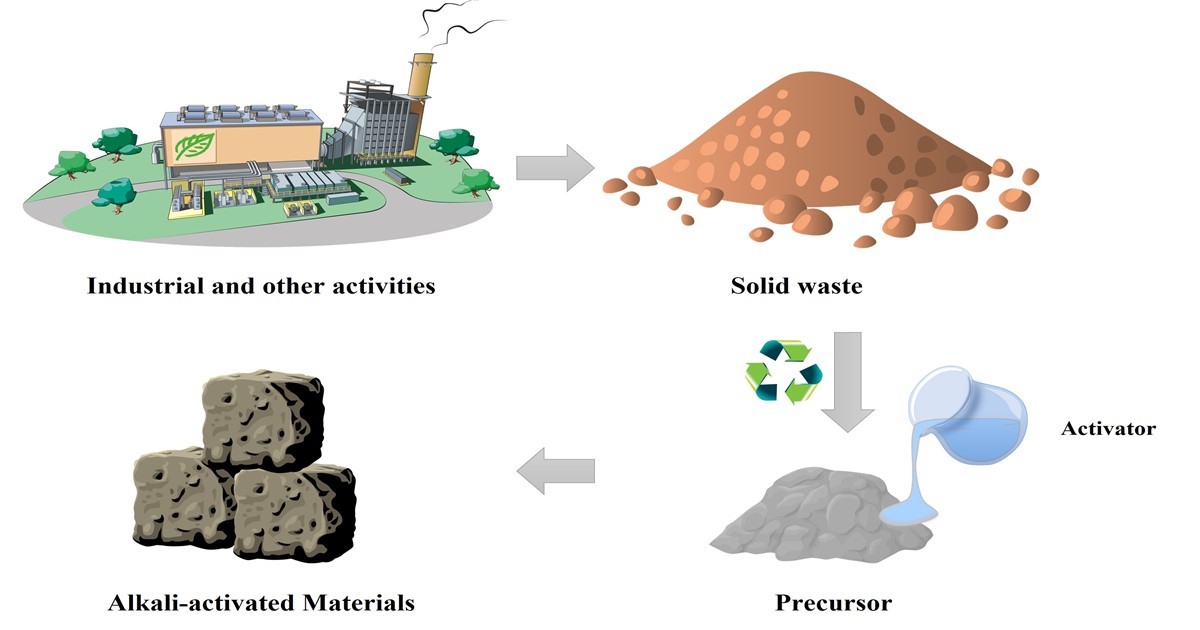- 3.2Impact Factor
- 6.4CiteScore
- 16 daysTime to First Decision
Research on Alkali-Activated Materials (Second Edition)
This special issue belongs to the section “Construction and Building Materials“.
Special Issue Information
Dear Colleagues,
Alkali-activated materials are a kind of cementitious materials generated by the reaction of solid silicate waste (slag, fly ash, kaolinite, etc.) with pozzolanic activity or potential hydraulic properties and an alkaline activator, such as alkali-aluminosilicate vitreous, alkali-fired clay, alkali-ore tailings, and alkali-calcium carbonate. Their advantages include a simple preparation, low costs, easy access to raw materials, low energy consumption, green environmental protection, high strength, and good durability, among others, making them an ideal substitute for Portland cement. As low-carbon materials, they have become a research focus and hot topic in major countries around the world. However, due to the complex sourcing of raw materials, the high content of alkali activators, and the lack of applicable additives, the use of alkali-activated materials is still limited in practical engineering.
To promote the application of alkali-activated materials, we are pleased to invite researchers from all over the world to investigate them.
This Special Issue aims to highlight original findings on alkali-activated materials, alongside potential perspectives for future investigations.
In this Special Issue, original research articles, reports, and reviews are welcome.
Prof. Dr. Feng Rao
Dr. Hui Liu
Guest Editors
Manuscript Submission Information
Manuscripts should be submitted online at www.mdpi.com by registering and logging in to this website. Once you are registered, click here to go to the submission form. Manuscripts can be submitted until the deadline. All submissions that pass pre-check are peer-reviewed. Accepted papers will be published continuously in the journal (as soon as accepted) and will be listed together on the special issue website. Research articles, review articles as well as short communications are invited. For planned papers, a title and short abstract (about 250 words) can be sent to the Editorial Office for assessment.
Submitted manuscripts should not have been published previously, nor be under consideration for publication elsewhere (except conference proceedings papers). All manuscripts are thoroughly refereed through a single-blind peer-review process. A guide for authors and other relevant information for submission of manuscripts is available on the Instructions for Authors page. Materials is an international peer-reviewed open access semimonthly journal published by MDPI.
Please visit the Instructions for Authors page before submitting a manuscript. The Article Processing Charge (APC) for publication in this open access journal is 2600 CHF (Swiss Francs). Submitted papers should be well formatted and use good English. Authors may use MDPI's English editing service prior to publication or during author revisions.
Keywords
- alkali-activated materials
- alkali activators
- mixing proportion design
- mechanical performance and durability
- reaction mechanism
- modification
- additives
- carbon analysis

Benefits of Publishing in a Special Issue
- Ease of navigation: Grouping papers by topic helps scholars navigate broad scope journals more efficiently.
- Greater discoverability: Special Issues support the reach and impact of scientific research. Articles in Special Issues are more discoverable and cited more frequently.
- Expansion of research network: Special Issues facilitate connections among authors, fostering scientific collaborations.
- External promotion: Articles in Special Issues are often promoted through the journal's social media, increasing their visibility.
- e-Book format: Special Issues with more than 10 articles can be published as dedicated e-books, ensuring wide and rapid dissemination.

